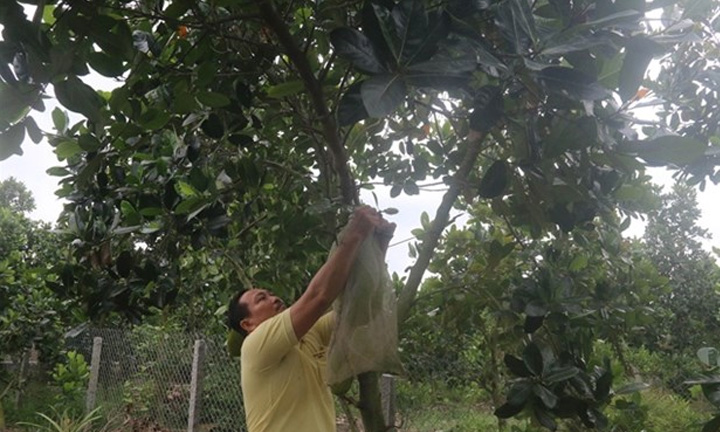SOURCE: Vietnam Plus
The Mekong Delta province of Tien Giang is seeking to expand the areas under various fruits to help increase farmers’ incomes and exports.
The country’s largest fruit-growing province has 14,000ha under durian in Cai Lay and Cai Be districts and Cai Lay town, 9,000ha under dragon fruit in Cho Gao district and 16,000ha of pineapple in Tan Phuoc district.
It is encouraging farmers to expand cultivation of certain fruits in coastal areas and unproductive rice fields and along canals, according to its Department of Agriculture and Rural Area.
Farmers are encouraged to use advanced techniques to increase yield, quality and output.
The province plans to set up more co-operatives and co-operative groups to link farmers together and with companies to develop value chains and ensure the former have reliable outlets.
Nguyen Van Man, director of the department, said to meet market requirements, the department plans to teach farmers techniques for growing fruits to Vietnamese and global good agricultural practices (VietGAP and GlobalGAP) standards.
This would help them grow clean fruits, ensure origin traceability and reduce production costs, he said.
The department has instructed farmers to grow fruits in the off-season to avoid oversupply during the main harvest season, he said.
Each district in the province has advantages for growing one or more key fruits.
Cai Lay, for instance, grows durian for exports, Cho Gao grows dragon fruit and Cai Be grows the Hoa Loc mango.
Cai Lay has 305ha of durian orchards that meet VietGAP standards and 21ha that meet GlobalGAP standards.
Some key fruits like Cai Lay durian, Hoa Loc mango and Cho Gao dragon fruit have been granted collective brand names, creating favourable conditions for their sales domestically and exports.
Hoa Loc mangoes are exported to the US and served on Vietnam Airlines.
Cai Be has established the Hoa Loc Mango Co-operative in Hoa Hung commune, which has 114 members who farm a total of 68ha to VietGAP standards.
Phan Thanh Son, head of the district Bureau of Agriculture and Rural Development, said to improve the quality of key fruits, the district focuses on teaching farmers farming techniques and how to build brand names.
They are instructed to choose disease-free and high-quality seedlings for planting, grow fruits to GAP standards and become members of co-operatives to secure outlets, he said.
The province has in recent years turned a lot of unproductive rice and other fields into high-value orchards that can adapt to saltwater in rivers and drought.
Go Cong Dong district is normally affected by saltwater intrusion in the dry season, causing difficulties for agricultural production, affecting the lives of locals.
To cope with this, it encourages farmers to grow high-value fruits like dragon fruit, Barbados cherry, soursop and lime that grow well there and fetch farmers high incomes.
Nguyen Van Qui, head of the Go Cong Dong Bureau of Agriculture and Rural Development, said: “The orchard economy has played no small part in improving incomes and reducing poverty in rural areas.”
It helped make Go Cong Dong and Cho Gao the province’s first two districts to be recognised as new style rural districts in 2020, he said.
Cho Gao has turned almost all unproductive paddies into speciality orchards.
The province has granted production codes for 281 jackfruit, dragon fruit, mango, watermelon, banana, rambutan, and milk apple orchards for export to China, the US, Japan, the Republic of Korea, Australia and other markets.
The province has helped 105 farmers complete procedures for obtaining VietGAP certification for their fruits and issued 458,000 origin traceability stamps to 13 establishments that grow fruits or process them.
It has 82,700ha under fruits that yielded 1.59 million tonnes last year, 4.2 per cent more than in 2020.
It exported 12,400 tonnes of fruits and vegetables last year for 26.6 million USD.

